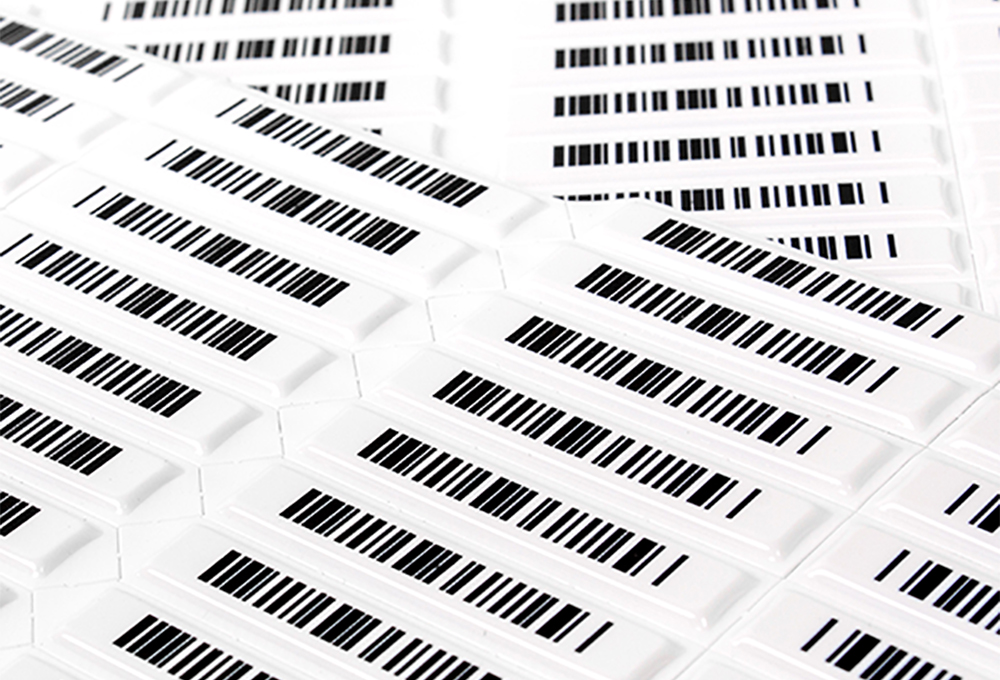Some pointers on security label positioning

In retail there’s often talk about the consumer experience, with a wealth of discussion about displaying products, showcasing them and positioning them to make wares more appealing.
But what about the practicalities, especially when it comes to security? And what about security that also factors in store efficiency?
Here are some quick pointers on security label positioning that allow you to meet display, security and efficiency requirements to the best effect.
The security label advantage
When it comes to securing products using electronic article surveillance (EAS), security labels are often the preferred way of protecting small, low-value, high-volume items against theft.
The benefit of adhesive security labels is that they offer affordability and disposability. They are simple to apply and quick to deactivate, with deactivation usually occurring as a barcode is scanned at the point of sale (POS).
They also accommodate all major EAS types, with security labels available for acousto magnetic (AM) or radio frequency (RF) EAS systems. As a result, labels are considered the ideal way of protecting items like books, CD’s pharmaceuticals, perfumes, non-perishable groceries, hardware and more.
But where do you place the label on an item without diminishing its appeal, and how do you ensure the security label can be deactivated effectively without costing time at the checkout?
Location, location
In terms of security, labels serve a dual role. They offer a visual deterrent for shoplifters considering taking an item, yet also serve the very real purpose of alerting staff should an item be taken.
Meanwhile, when it comes to positioning, they need to be affixed in a “sweet spot” where they can be readily deactivated at the point of sale, but don’t interfere with the aesthetic appeal of a product or the essential information contained on the packaging.
Packaging News UK recently noted the ideal place for a security label is near a product barcode.
“From a retailer’s perspective, the optimum position for a security label is on the same side as the barcode – because the label will be deactivated as it is scanned at the till point.”
But they also continue on to make a very valid point. Often in the retail world security labels aren’t affixed exactly where intended.
“The reality of a busy retail environment often means that security labels are hastily applied anywhere, with little regard for branding, deactivation or information panels.”
And this can have a big effect…
The problem with poor positioning
At the least, poor positioning of labels can cost time at the point of sale, with the label obscuring the barcode that allows a transaction to take place.
In an era when self-serve checkouts are gaining popularity, this is a particularly problematic threat.
Just imagine, the self-confident, self-sufficient shopper stands there happily scanning their goods only to find an item cannot or will not scan and the help of an assistant is required. It costs time, which costs money, but more importantly offers a negative experience for the consumer.
However, that’s not the only potential problem with badly positioned labels.
Should a poorly positioned label obscure the actual branding, packaging or details about a product, they can actually cost a sale. And that costs very real money, and leaves a retailer wondering why.
So what is the best practice?
The right label for the right task
As with all EAS security, it’s important you select the right label or tag for the right product, and there are a range of options for both AM and RF EAS systems to assist.
Label sizes vary in profile and in size and shape, with semi-transparent options also available to ensure they don’t obscure vital information on the packaging.
In addition, security labels can be purchased with the barcode pre-printed so product information and security is catered to easily in a single label.
More information about label options is available here.